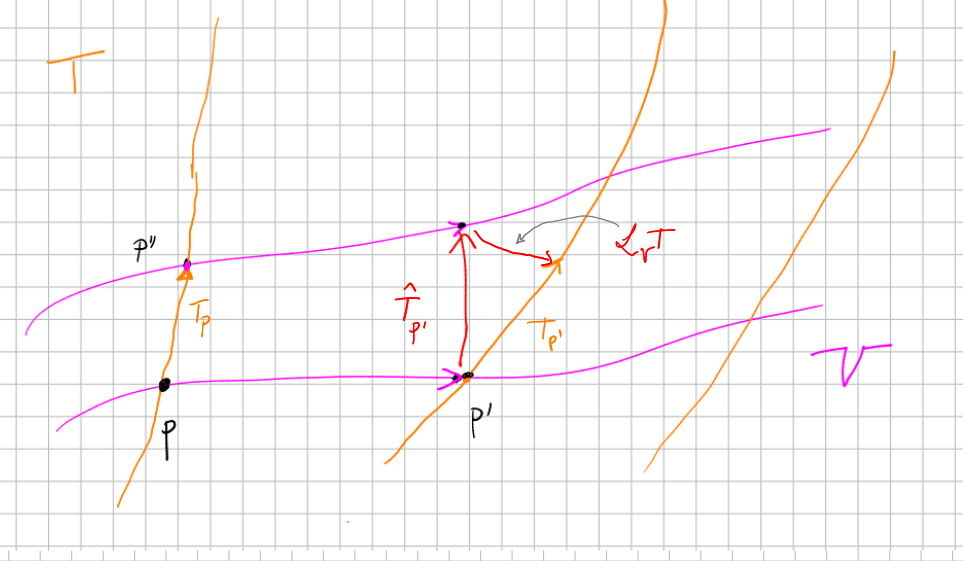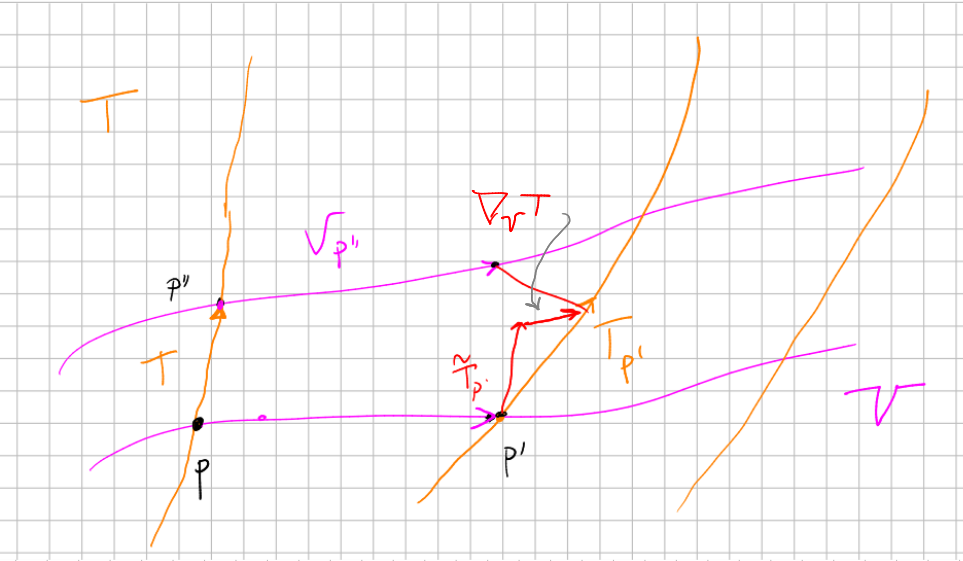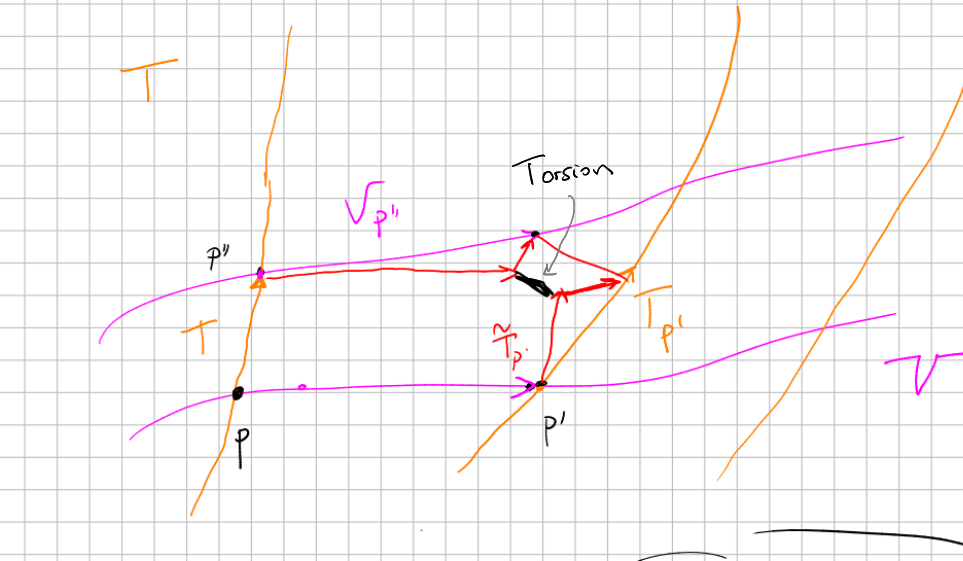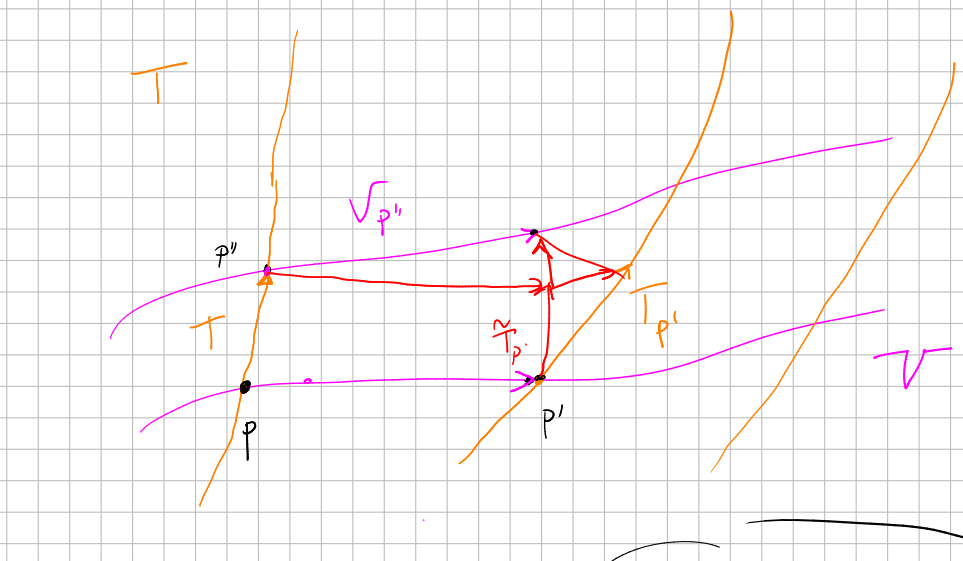Relation between Lie derivative and covariant derivative
Better explanation in this video made by myself.
In both cases we want to understand the derivatives as the velocity of curves in the same finite dimensional vector space . But the approach is different:
- In the case of
, we use the flow of . So the curve is . We could write, informally, that
when we go from a point

- In the case of
, we use the parallel transport along with respect to . So the curve is . (Here denotes any smooth curve passing through at with velocity , and )
We could write, informally, that
when we go from a point

Finally, since the torsion of a connection is the fail to close a parallelogram made of parallel transported vectors, we have the following computational relation between covariant derivatives and Lie derivatives:

Also, most connections are torsion free, and in those cases we have:
